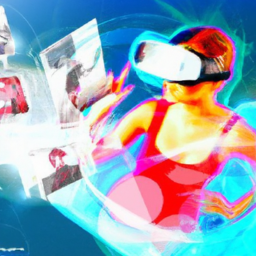The Role of AR and VR in Immersive Marketing
Marketing has always been about finding innovative ways to engage and captivate audiences. In recent years, augmented reality (AR) and virtual reality (VR) have emerged as powerful tools to create immersive marketing experiences that truly capture the attention of consumers.
What is AR?
AR is a technology that overlays digital information or virtual objects onto the real world. It enhances what we see and hear, merging the virtual and physical environments. AR can be experienced through mobile devices, such as smartphones or tablets, or through dedicated AR glasses.
What is VR?
On the other hand, VR is a more immersive technology that transports users into a fully virtual environment. It creates a simulated reality that can be experienced through VR headsets, providing a 360-degree view and often incorporating motion sensors.
Creating Immersive Marketing Experiences with AR
AR has the unique ability to bring static advertisements to life. By scanning a print ad or pointing a mobile device at a specific object, AR technology can overlay additional information, animations, or even interactive games onto the real-world scene.
For example, a furniture retailer can use AR to allow customers to view how a particular sofa would look in their living room. By simply pointing their smartphone at a designated spot in their room, they can visualize the sofa in 3D and even change its color or fabric.
AR can also be utilized in experiential marketing campaigns. Brands can create AR-enabled installations or events where participants can engage with the brand in a whole new way. For instance, a sportswear company could set up an AR basketball game where users compete virtually against each other, fostering a fun and interactive brand experience.
Immersive Brand Experiences with VR
VR takes immersion to the next level by completely transporting users into a virtual world. This makes it particularly effective for creating memorable brand experiences or showcasing products and services in a highly engaging way.
For instance, a travel agency can use VR to create virtual tours of exotic destinations. Users can put on a VR headset and feel as though they are experiencing a beach in Bali or walking the streets of Paris. This immersive experience helps potential travelers get a taste of what their vacation could be like and increases the likelihood of booking a trip.
VR can also be used to simulate product usage or training experiences. For example, a car manufacturer could create a VR experience that allows potential buyers to virtually test drive a new model, virtually exploring its features and benefits.
The Future of Immersive Marketing
AR and VR are continually evolving, with new advancements making the experiences even more realistic and immersive. As these technologies become more accessible and affordable, we can expect to see them playing an increasingly important role in marketing strategies.
With AR and VR, marketers can create experiences that are not only visually impressive but also emotionally engaging. By transporting consumers into new worlds, these technologies hold the power to create lasting brand impressions and connect on a deeper level.
So, get ready to embrace the future of marketing and start thinking about how AR and VR can take your brand’s storytelling to the next level!


